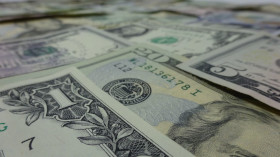The US dollar is looking to continue its winning streak on Thursday after the federal government reported that the number of Americans filing for first-time unemployment benefits plunged to a new COVID-19 pandemic low. Although the number remains historically high, the trends suggest the labor market is extending its rebound. But while the greenback has cratered in recent months, is the string of gains a signal that the currency is triggering a rally?
According to the Department of Labor, initial jobless claims came in at 881,000 in the week ending August 29. This is lower than the market forecast of 950,000. Continuing jobless claims hit 13.254 million, while the four-week average, which eliminates week-to-week volatility, was just below 992,000.
New jobless claims advanced the most in California, with 40,000 fresh applications. There were smaller increases in Louisiana and Texas, and initial jobless claims declined in Florida and Georgia.
It should be noted that the Bureau of Labor Statistics (BLS) recently announced that it would modify the adjustment process to ensure the weekly report is more accurate. The level of seasonally adjusted new claims has been higher than the real number of Americans submitting applications for benefits.
The Bureau of Economic Analysis (BEA) reported that the US trade deficit rose to $63.6 billion in July, up from the $53.5 billion trade gap in June. The market had penciled in a reading of $58 billion. Imports increased by 10.9% to $231.7 billion, while exports climbed 8.1% to $168.1 billion.
The IHS Markit composite purchasing managers’ index (PMI) advanced to 54.6 in August, up from 50.3 in July. The services PMI soared to 55 last month, up from 50 in the previous month.
The US Dollar Index, which measures the greenback against a basket of currencies, has been steadily rising since slumping to below 92 earlier this week. The index was unchanged at 92.84 on Thursday. The greenback has come under tremendous pressure since hitting a peak of 103.00 earlier this year, from ample dollar liquidity in global financial markets to confidence in the broader market. Plus, with the Federal Reserve almost guaranteeing inflation and low interest rates, investors fear there could be inflation over the next 12 to 18 months.
The USD/CAD currency pair surged 0.44% to 1.3104, from an opening of 1.3046, at 13:39 GMT on Thursday. The EUR/USD tumbled 0.14% to 1.1842, from an opening of 1.1852.
If you have any questions, comments, or opinions regarding the US Dollar, feel free to post them using the commentary form below.
USD/CAD Rises As Initial Jobless Claims Fall to New Pandemic Low
